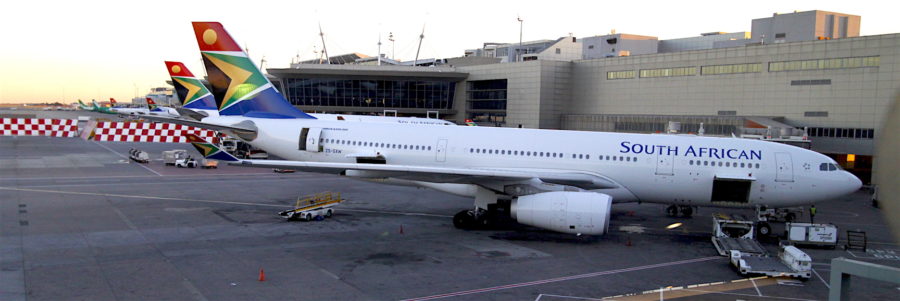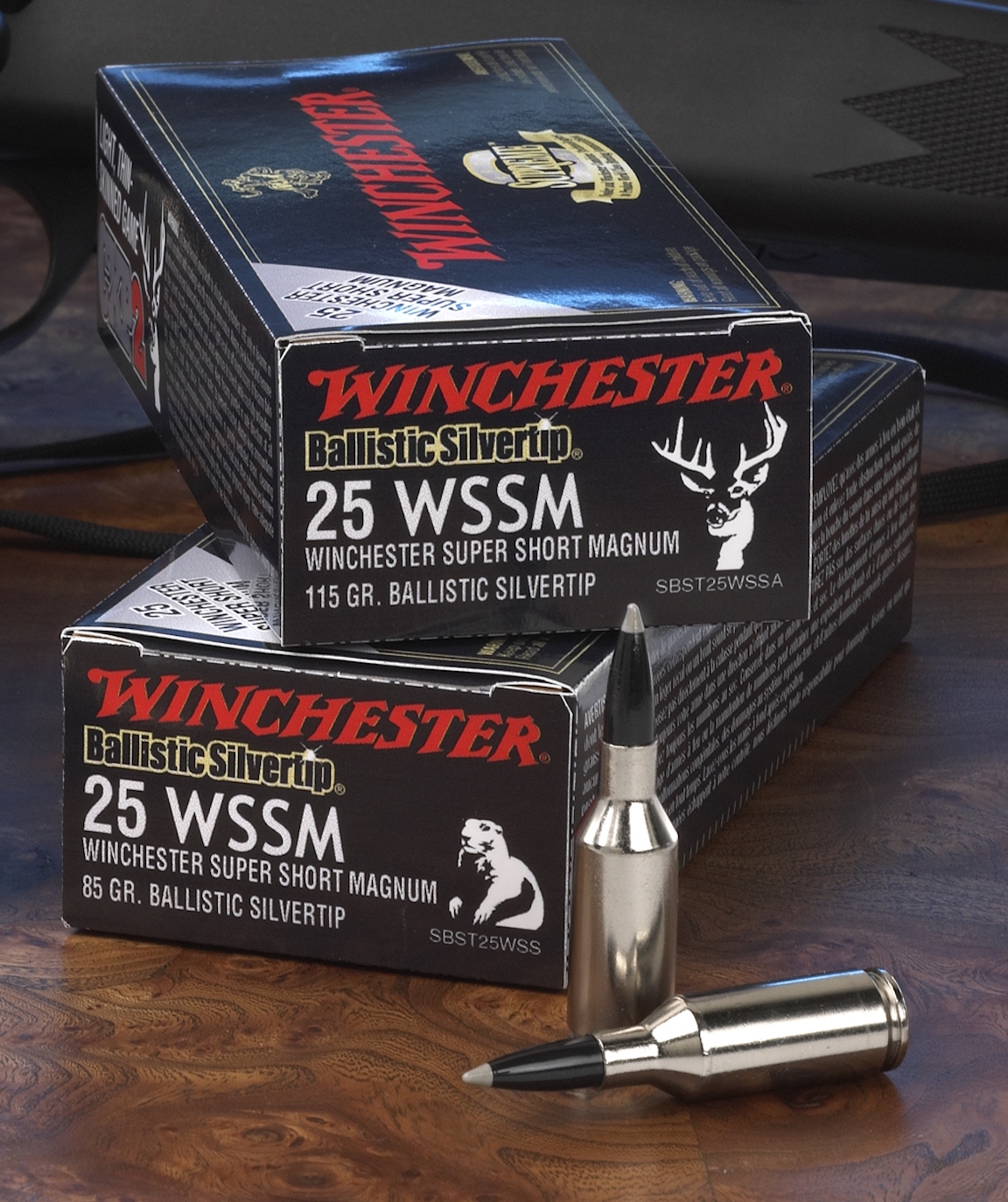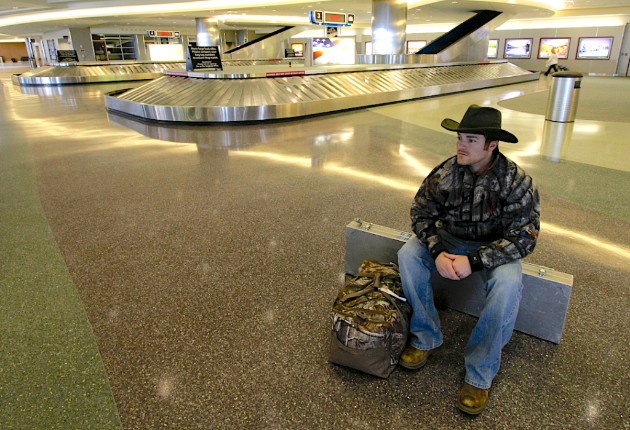WARNING: This is no “fluff and stuff” article. It’s an in-depth, informative report designed to help you smoothly and successfully fly on commercial airlines with firearms. It’s based on 35 years of international hunting travel and 14 African safaris. I’m going to provide the “straight scoop” details on flying firearms around the world, but specifically to southern Africa.
FLYING FIREARMS STARTS WITH PAPERWORK (OF COURSE)
In general, transporting your hunting rifles to most southern African countries requires recording the make, model, caliber, and serial number of each with U.S. Customs. This is your proof of ownership.
This used to be a simple matter of showing your guns to a U.S. Customs agent at any airport office, recording the information on a 4457 form (download it here), and keeping that form with you. The 4457 is your proof of ownership, so you don’t have to pay import fees when you bring it back into the U.S. It’s valid for as long as you possess it and the guns listed on it.
But . . . South Africa Customs/Police are now requiring all 4457s be dated for the current calendar year. In other words, you’ll have to go through the hassle of getting a new 4457 each year you want to hunt Africa. Not a huge deal, but essential to know before you go. Don’t get your 4457 in December 2017 and try using it on a safari in 2018.
One other piece of paperwork you’ll usually need is a letter from your professional hunter/host/outfitter inviting you to the country to hunt. This apparently assures Customs and Police that you aren’t flying firearms in to start a one-man or -woman insurrection. Your PH will probably email you the letter and you can print it. Make back-up copies of this, your 4457, and all paperwork and keep them in two different places as you travel, just in case. Keep digital copies, too. (I just photograph each with my smartphone and email them to my PH, my wife, and myself.)

Flying firearms via commercial jet service is commonly done and surprisingly easy—if you follow the rules.
FROM PAPER TO PLASTIC—HARD PLASTIC FOR FLYING FIREARMS
With 4457 papers in hand, you pack the corresponding gun(s) in a lockable hard case per your airline’s rules as posted on its website and check them as baggage. Yup. The gun case flies with you same as your other checked bags. Some airlines allow ammo to be packed with guns, some do not, but most countries do not, so plan to pack ammo apart from guns. This means ammo would go into a small, locked hard case of its own and then into one of your regular bags with your clothes. Be aware that some African countries/airlines will insist your ammo box be pulled out of any other bag to fly as its own checked bag for any in-country flights. Make sure the box is sturdy enough to handle this.
FLYING FIREARMS GETS OFF THE GROUND AT YOUR HOME AIRPORT
Of course, you have to declare to the check-in agent that you’re shipping a firearm (two to as many as you want can be included in one case depending on the airline.) You’ll sign a paper or card saying they are unloaded and place this in the case and securely lock said case. (Find details on locks later in this report.) TSA will then inspect it (chemical swab, X-ray, or hand check.) If it passes muster, the case goes into the regular baggage system. You’ll see it again at your destination.
Now, to grease the skids and smooth everything along, it’s smart to break down the gun or at least remove the bolt and slap a trigger lock on. Non-firearms people love seeing trigger locks, imagining them all powerful. Some countries mandate these, so don’t take any chances. I like a combination lock so I don’t have to worry about losing a key.
REGULATIONS GOVERNING FLYING FIREARMS CAN CHANGE
Because national politics, laws, and rules change on a whim, you should always get the latest details from your outfitter/PH or a travel agent specializing in hunting travel. (gracytravel.com is one such. More on them later.) If there are any special laws, tricks, or hoops you must jump through, these experts should be able to guide you.
Usually you need to preregister the make, caliber/gauge, and serial number of your firearm(s) with the authorities at your destination country by filling out forms and submitting them well before your trip. Often you must also specify the exact number of cartridges you are bringing. Their headstamps must match the caliber roll-stamped on your rifle, so don’t take a .270 Winchester rifle and handloads you made from .30-06 brass. Each country specifies the maximum numbers of cartridges you may import, usually around 60 to 80—more than plenty for a competent hunter.

This is what you’ll see when you exit baggage/Customs Control at Johannesburg’s OR Tambo airport. Your PH or greeter should be here. If you’re going solo, just ask directions to the firearms registration office. It’s off to the right.
THERE’S HELP FOR FLYING FIREARMS
Don’t freak out about this bureaucratic red tape. While all the “i”s must be dotted and the “t”s crossed, once that is completed you’re free to go. If your PH does not provide you with this paperwork and help you prepare it, you can hire a traveler’s service such as Gracy Travel in Texas. This is the easiest route. I’ve used Gracy Travel many times. They are always up-to-date on the latest red tape, and they handle it with aplomb. They also handle VISAs, identify needed vaccines (few or none for SA and Namibia), and are available via emergency phone 24/7 should any problems arise. They can even book the best flights for you.
In addition, they offer a meet & greet staff member in Johannesburg (Joburg—the initial landing city for most southern Africa trips.) This person is kind of an airport tour guide who’ll usher you smoothly through everything from registering your guns and finding your next flight to converting dollars to local tender. We’ve appreciated these services from friendly Bruce, Lucky, and Chris many times.
As of this writing Namibia does not require firearms preregistration. You merely fly into Windhoek, the capital city, declare your firearms with the police at the airport, and register them on the spot. You can apply for the South African firearm permit in the OR Tambo airport on arrival in Joburg, too, but it’s faster to apply in advance. You’ll want to check for the latest regulations in Zimbabwe, Mozambique, and Zambia.
LET’S TAKE A DRY RUN
Let me give you an idea of how all of this “goes down.” After an overnight flight (about 16 hours) from Atlanta, NYC, or Washington, D.C., you land in Joburg just about when the sun is setting. It’s autumn or winter down there during hunting season, so it’ll be around 6 p.m. You might book a flight over that lands earlier, giving you time to transfer to your next flight, if one is needed.
You then follow the signs or the crowd off the plane and through the airport to Customs, where you present your USA passport, get your picture taken, receive your stamps or tourist entry permit, and proceed to baggage claim. After the typical long delay, your bags will roll down the carousel. Grab them and head toward the exit. Sometimes a Customs official will search your bags; sometimes they’ll just wave you through. Depends on how suspicious or guilty you look. Smile kindly and try to look harmless. Exit the doors to the Arrival Hall.
This is a big, modern airport. Here you’ll see the usual crowd of friends, agents, drivers, and family awaiting their travelers. If you’re hunting near Joburg, your PH will likely meet you and take control. If you’re traveling farther in country or out and you’ve booked with an agency like Gracy, your meet & greet agent will be waiting for you, probably with a sign bearing your name. You’ll follow him or her to the airport police/gun registration office, claim your gun case (they’ll have gotten it off the plane), and open it for inspection. Officials will check serial numbers, ammo, etc., stamp your papers, and send you on your way. That’s really about all there is to it.
FLYING FIREARMS BECOME WHEELING FIREARMS
You are now schlepping through the airport with all your bags and locked gun case. If you’re going on to Namibia, Zimbabwe, Zambia, or Mozambique, your travel agent will take you to your connecting flight and make sure you get your boarding passes and luggage tags. Then you roll to another firearms check station to have your guns and paperwork checked for your next flight. Hey, as far as those folks know, you’ve been in the country for days or weeks and are exporting a firearm. Papers, please. If all the numbers match up, you wheel your gun case to the luggage drop off, then head to your gate for your next flight.
If your flying schedule means you must overnight in Joburg, you’ll push your overloaded luggage trolley through the airport to the elevator that takes you up to the attached City Hotel. You could stay elsewhere, but City is attached to the terminal. It’s a clean, modern, safe hotel with friendly staff, quiet rooms, and a massive breakfast buffet that’s included in the room fee. Easy peasy. After a fitful night’s sleep (your timing will be way off,) enjoy that big breakfast and waddle off to your next flight. Bruce, Chris, or Lucky will be there to guide you.
IF YOU’RE FLYING TO ADDITIONAL COUNTRIES . . .
All other southern Africa airports are much smaller than Joburg’s, but the gun-importing process is similar. Look for the sign or ask someone where the firearms registration office is. Most likely your PH or one of his agents will be there to help with this. Collect your luggage and proceed to the gun registration. In most countries, your guns will go directly there rather than roll off the baggage carousel. Unlock, do the paperwork, match the numbers, and you’re off to camp. By the way, double check the numbers the agents write down on your paperwork. Make sure they get all the numbers correct and legibly written. A single digit that’s recorded wrong or out of order (a hasty “6” looking like a sloppy “0” or an “8” like a “3”) could cause headaches later when you leave.
Guard these gun papers with your life. Make copies if possible (photograph with smartphone). You’ll need to show them to authorities on your way out. Other than that, subsequent travel and gun handling will be much like at home. You’ll keep the gun locked as you travel to camp, but there you’ll follow the policy of your PH. Most let you keep the gun in your room, but some might insist, for everyone’s safety, that your rifles and shotguns be locked in a safe or closet overnight. You never know. I’ve twice been in camps where experienced world hunters had “accidental” discharges indoors. Don’t be that guy (knock on wood). Practice diligent gun safety at all times. You’re representing all hunters. The life you save could be my own!

Unusual cartridges are fun to hunt with, but if your supply is lost in transit, you probably won’t find replacements in safari camp.
FLYING FIREARMS AMMUNITION
There are a few rules governing flying ammunition, too. All cartridges must be secured in factory boxes or aftermarket boxes (plastic, fiberboard, wood) that isolate each cartridge. Loose cartridges in a bag aren’t allowed—they don’t want sharp bullet tips impacting primers. Rough handling can shake cartridges out of fiberboard boxes, so I tape mine thoroughly with clear packaging tape. Each box then goes into a plastic, hard-sided, lockable case that fits inside my clothing bag. Double check airlines and destination country regulations on this. A few countries are insisting the ammo box stay out and count as its own bag. This is supremely foolish, as all it does is increase your baggage fees and make it easier for thieves to spot and steal the ammo, but hey, bureaucrats.
I usually take 30 to 40 rounds for each rifle, but you might need 60 to 80 for a cull hunt. Often ammo can be purchased locally, but it might not be your favorite. Ask your PH what he can get. Figure on leaving any unfired rounds behind for your PH and/or any future clients who might lose theirs or run out. This possibility, by the way, is a good reason for shooting a common, popular caliber. You aren’t likely to find .270 WSM or .338 Federal loads in Grootfontein, Namibia.
Note: Check back tomorrow for the completion of this in-depth, informative article. For more from Ron Spomer, visit his website, ronspomeroutdoors.com, and be sure to subscribe to Sporting Classics for his features and rifles column.

